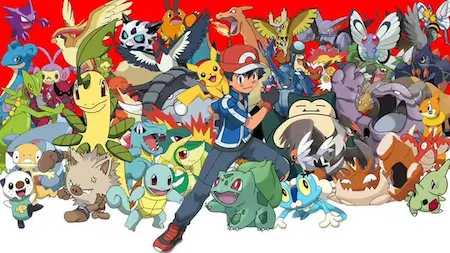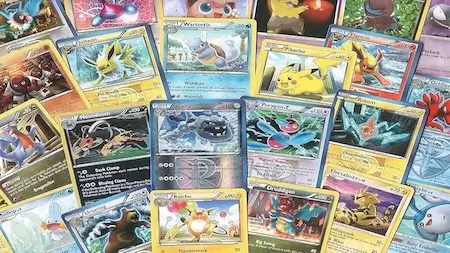In 1996, the world was introduced to the colorful creatures known as Pokémon on Nintendo’s Game Boy. The series was the brainchild of Satoshi Tajiri, inspired by his childhood hobby of collecting insects.
What started as a passion project soon became a fresh take on the role-playing genre, centered on capturing, training, and battling unique monsters.
Nintendo was initially hesitant, releasing the game only in Japan. After an overwhelming response, Pokémon came to the United States—and quickly grew into a global cultural phenomenon.
3 Key Takeaways
- Pokémon’s success formula: A blend of RPG gameplay, collecting, battling, and trading keeps players engaged across generations.
- Transmedia empire: Games, anime, trading cards, and merchandise all work together to keep Pokémon constantly in the public eye.
- Consistency with innovation: Nintendo preserves the core gameplay loop while introducing new Pokémon and mechanics to stay fresh.
So why has Pokémon thrived for nearly three decades while countless other would-be franchises—Bubsy the Bobcat, anyone?—faded into obscurity? Below are five core reasons behind Pokémon’s enduring worldwide success.
The Table of Contents
Pokémon Games Are the Swiss Army Knife of Video Games
From the start, Pokémon was far more than a simple handheld title with colorful creatures. At its core it’s a turn-based RPG, layered with team-building strategy and competitive battles that feel like arena combat.
strategy and competitive battles that feel like arena combat.
It also bakes in a collection meta-game—a virtual counterpart that complements the physical Trading Card Game—so progress feels meaningful whether you’re battling, trading, or filling the Pokédex.
Thanks to the Game Boy Link Cable, players could trade Pokémon like Squirtle and Magikarp face-to-face (with some species even requiring trades to evolve).
By introducing new creatures and mechanics with each generation, Nintendo kept the metagame fresh and gave fans of Red/Green/Blue a reason to return for Gold/Silver/Crystal, Ruby/Sapphire, and beyond.
Pokémon Made Gaming Social, Not Just Multiplayer
One of Pokémon’s biggest breakthroughs was how it redefined multiplayer. Instead of players simply sitting side by side, the Game Boy Link Cable made battles and trades happen face-to-face. This turned every encounter into a social experience, almost like a tabletop RPG brought to life—only without the 12-sided dice.
Even more impressive, Nintendo pulled this off on an 8-bit handheld console. Kids no longer needed a living room setup or a bulky console to play together.
They could meet at the park, the schoolyard, or the mall and immediately start trading and battling on the spot. This social connection is a key reason why Pokémon built such a loyal community, and why players still come back to the franchise decades later.
The Characters Do the Selling
Pokémon’s developers deliberately avoided convoluted storylines, choosing instead to build around a simple but powerful premise: catching, training, and battling monsters.
battling monsters.
From the original Red and Blue through today’s modern entries, the core gameplay loop has remained consistent. While some titles—such as Pokémon XD Gale of Darkness. Experimented with more complex narratives, the franchise has always kept its focus on collecting, battling, and trading.
What truly keeps the series thriving is the introduction of new Pokémon with each generation. Nintendo carefully teases and reveals fresh designs, ensuring excitement before every release.
These characters become instant icons, encourage trading with friends and strangers, and transform each sequel into an event. By making its characters the centerpiece of its marketing, Pokémon ensures its fan base stays engaged, loyal, and eager for the next adventure.
Pokémon Has Become a Well-Oiled Machine
A major reason for Pokémon’s lasting popularity is the way The Pokémon Company International manages the brand. Instead of treating each release as a standalone title, they think in terms of generations. Every new mainline game isn’t just a sequel—it marks the beginning of an entire era, complete with new Pokémon, mechanics, and themes.
Each generation also connects seamlessly with other parts of the franchise. The anime, trading cards, movies, and merchandise often launch alongside or tie into the games, reinforcing the brand across multiple mediums. This transmedia strategy keeps Pokémon constantly in the public eye, ensuring that the franchise remains relevant to both longtime fans and new players alike.
Nintendo Hasn’t Screwed It Up Yet
When Pokémon Red and Blue debuted on the Game Boy, it stood out on a system best known for Super Mario Land and Tetris. With its unique premise, colorful characters, and polished RPG gameplay, it became an instant smash hit.
colorful characters, and polished RPG gameplay, it became an instant smash hit.
Nintendo could have treated it as a one-off success, but instead they recognized its franchise potential and invested heavily, establishing The Pokémon Company International to oversee its growth.
Beyond the games, Nintendo expanded into anime, manga, trading cards, and merchandise, creating a full ecosystem around the brand. Yet despite these expansions, the company has never strayed from the core principles.
That made Pokémon special: role-playing depth, collecting, and social gameplay. This commitment to its foundation is a big reason why Pokémon continues to thrive nearly three decades later.
📚 Additional Reading
The Retro Wrap-Up: Why Pokémon Is Still So Successful
Fans may debate which Pokémon generation or sequel is the best, but one truth remains: the overall quality of the franchise has been consistently high. From handheld beginnings to modern console releases, Pokémon has inspired countless “Top 10” lists and remains a benchmark in gaming culture—much like Final Fantasy once did for RPGs.
Pokémon isn’t just a beloved game series—it’s officially the world’s biggest video game franchise, surpassing Mario, Call of Duty, and Final Fantasy in overall revenue. As GamesIndustry.biz notes, the critter-catching phenomenon has thrived for over 25 years by blending smart marketing, multi-platform expansion, and constant reinvention.
The key to this enduring success is Nintendo’s and The Pokémon Company’s commitment to sticking with what works. By preserving the core gameplay loop of catching, training, battling, and trading—while refreshing each generation with new Pokémon and mechanics.
They’ve ensured that Pokémon continues to capture the imagination of players nearly three decades later. That balance of tradition and innovation is what keeps the franchise at the top of the gaming world.
Frequently Asked Questions:
Why is Pokémon considered a recipe for success?
- Pokémon blends role-playing mechanics, monster collecting, battling, and trading, creating a unique formula that appeals across generations and platforms.
What is Pokémon’s success rate in mobile games like Pokémon Go?
- Pokémon Go is one of the most successful mobile games of all time, generating billions in revenue and keeping players engaged through real-world exploration and events.
What is the financial success of the Pokémon TCG?
- The Pokémon Trading Card Game is a major driver of franchise revenue, with competitive play and collectible cards fueling global popularity and financial success.
Why has Pokémon Unite been successful?
- Pokémon Unite expanded the brand into the MOBA genre, attracting both casual and competitive players, and demonstrating Pokémon’s adaptability across gaming markets.
What is the overall success of Pokémon as a franchise?
- Pokémon is the world’s biggest video game franchise, surpassing Mario, Call of Duty, and Final Fantasy in revenue, thanks to its games, anime, trading cards, and merchandise.




